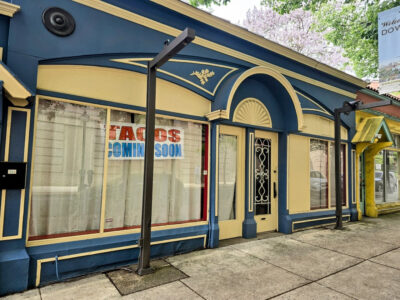
This editorial article is a part of Digital Infrastructure Month of Technical.ly's 2022 editorial calendar. This month’s theme is underwritten by Verizon 5G. This story was independently reported and not reviewed by Verizon before publication.
The pandemic-borne remote work revolution made the option to drop everything and explore life in another corner of the world more possible than ever. Many didn’t need to leave their jobs. It even breathed new life into an old concept: digital nomadism.
I’ve dabbled in the practice myself, taking months-long excursions to stay with family in the mountains of Pennsylvania. But some one-time DC and Baltimore residents have quite literally taken their opportunity and ran, spending months and years far from the mid-Atlantic region.
It’s not just available to those who can work whatever hours they choose, either. The managers, COO and CEO who all shared their stories with Technical.ly had roughly the same takeaway: you not only can do this (while acknowledging costs that certain privileges allow) but should.
We’ll get to that, though. Below, learn about four people who made the world their oyster — and how they pulled it off.
A starting spark
By the end of 2019, Abhi Mathew, a project manager at Rockville, Maryland IT company Dataprise, had most of a decade on an H-1B work visa. Feeling frustrated with the past political regime’s attitude toward immigrants, he and his wife moved away with two kids in tow, “re-immigrating” to Bombay (now Mumbai), India.
Mathew had been working remotely for six years prior. He was confident that, after clearing it with his employer, he could work from anywhere. The plan, he told Technical.ly, was to expose their children to life in India for longer than their prior two-week vacations allowed.
The pandemic arrived four months later. Luckily, Mathew and his wife built a habit of working 9-to-5 EST hours, which was about 6:30 p.m. to 2:30 a.m. IST, so they could conduct business as usual.
“All this allowed us to reconnect with extended family and friends over a longer period of time,” Mathew said. “This was something that was not possible prior, with working from the US. Even during the pandemic, we felt completely safe and it was a great experience for my kids, who went to school remotely there for a year.”

Abhi Mathew and family in front of the Gateway of India in Mumbai. (Courtesy photo)
Dawn Myers, founder and CEO of hair care company The Most, made her decision to leave in February of 2021. Her startup was in full swing and raising funds, which she didn’t want to put toward her $1800-per-month rent in DC. She instead put everything into storage and went country-hopping, staying a few months in each place.
“We were just getting our big, institutional funding for the first time, and I was going to be paying myself a salary for the first time,” Myers said. “I just wanted to make sure that I was being as judicious with those dollars as possible.”
She started in Mexico before staying at a friend’s hotel in Jamaica. After that, she headed to Lima, Peru, followed by stays in Santorini, Greece and Poland.
While she left primarily for financial reasons (she spent around $500 per month in each location), being a founder in the great unknown forced her to look up from her laptop and remember what was out there.
“Especially when you’re a founder, it’s really easy to just stay in your nook and just work, work, work, work, work,” Myers said. “But when you’re alone in a country, you have to go out. You have to meet people.”
Sarah Moses, COO at orchestration company Prefect, did digital nomadism a little closer to home. In April of last year, she bought a green Subaru Forester, named it the Pickle Rick (from a plotline in the animated series “Rick and Morty“) and promptly moved in.

Inside Moses’ car. (Courtesy photo)
During the year she spent on the road — largely in Colorado, Utah and New Mexico — Moses primarily slept on a camping mattress in the car. But she also made friends along the way who offered temporary lodging in exchange for cooking and groceries.
“By the end of it, I felt like I really, really wanted to have a home and start to build out a community in a certain area of the country, whereas before I hadn’t felt that desire at all,” Moses said. “And I only want to do things in my life where I really feel a draw towards it and not just do it because I should be doing it.”
She also began a new hobby: rock climbing. Her first experience involved climbing a cliff in a 2,500-foot-deep canyon after a pal showed her the ropes (pun intended). She’s been hooked ever since.
Since you can only climb with a partner, Moses often had to ask strangers. That even enabled her to make friends. Emotionally, it helped her overcome her quiet nature while offering the boost a physical challenge can grant — both of which she applied to work.
“For me, it was scary physically, but whenever I could actually make it to the top of a climb — one that I couldn’t three months ago and worked on it for a long time and finally got it — that made me feel really confident,” she said.
How’d they do it?
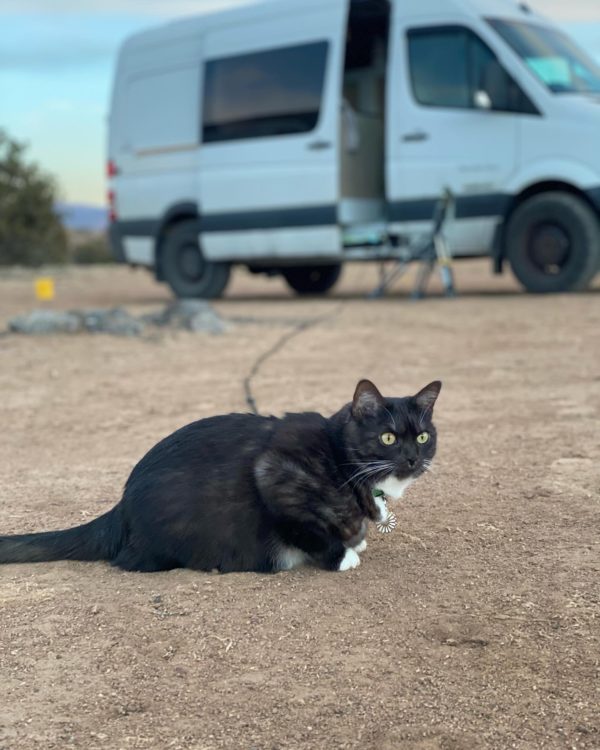
Celene Monroe’s feline companion, Harriet. (Courtesy photo)
ETC Baltimore’s marketing and engagement manager Celene Monroe (who spoke to Technical.ly from her vehicle in Portland, Oregon) started her journey by purchasing a Mercedes-Benz van from a seller who already outfitted it with solar panels, chargers and a fridge. After adding some more cabinets and storage, she and her cat, Harriet (who, very adorably, sits on her dashboard while Monroe drives — navigating abilities unconfirmed), left for Florida. From there, she moved through Louisiana before traversing Texas and the national parks in Utah. She then reached California and went up the West Coast to Oregon.
Traveling around like this, she said, requires planning to ensure her availability during work hours. For the most part, she’s around 9-to-5 and plans her trips around those times — though she occasionally has to tell coworkers she’ll be unavailable for hours-long stretches. She has to guarantee cell service if she has a meeting planned the next morning. Otherwise, she typically works off hotspots and coffee shop Wi-Fi.
“People are really understanding about it, I think, because it is very cool,” Monroe said. “I’ve always been a self-starter, so people don’t need to check in on me much.”
Monroe also cited the luck of having friends who renovated a school bus that she’s traveled with since the beginning. Without them, she’s not sure if she would have done it.
“I really remember that I’m lucky to be doing this at all,” Monroe said. “I could easily still be doing this from my couch in Baltimore and doing the same thing over and over, but my work is what enables me to do this.”
Good Wi-Fi and phone service were essential, if not universally attainable, for each respondent. All Mathew needed to connect with US-based colleagues was Wi-Fi, which cost approximately $100 per year for a 100 Mbps fiber connection. Moses, on the other hand, primarily relied on an external hotspot she purchased for the car, as well as friends’ household internet. That sometimes required effort, like the four hours she spent searching for service on one day of her week-long Yosemite excursion.
Since she stayed in the same place for a few months at a time, Myers could generally count on stable Wi-Fi. When she couldn’t (including after an earthquake in Lima), her team primarily communicated through Whatsapp and followed procedures she planned ahead of time.
I could easily still be doing this from my couch in Baltimore and doing the same thing over and over, but my work is what enables me to do this.
Myers added that she often worked until or beyond 8 p.m. before she took this trip. While traveling, she had amended hours of about 9-to-4 in whatever time zone she was in, which let her complete prep work in the morning before taking calls through the afternoon; she even took several final calls of the day while taking sunsets in from a rooftop bar. The result, she said, was a much more defined balance than she had before.
Still, not everyone was immediately and constantly supportive of the trip. She said that many investors implied that she should be at home working on her company instead of traveling. They didn’t think her cost-saving investment made sense, which is why she had to remind herself that she had a product that others wanted — and take the power back into her hands.
“[As a founder], it’s your job to set that tone, it’s your job to set that narrative,” Myers said. “It’s your job to establish the fact that they don’t dictate to you. You have a service that’s valuable to them. They’re getting that service flawlessly, and you can be wherever in the world you want while delivering that service.”
The journey back home

Myers at work in Santorini, Greece. (Courtesy photo)
Our digital nomads agreed that being a self-starter is crucial to the lifestyle. But if you’re happy with what you’re doing, it’s not as much of a struggle as it may seem. You might even take some of that discipline back home.
Shortly after she returned, Myers received a cancer diagnosis that she’s currently receiving treatment for. Despite that treatment, the recent Baltimore transplant said that she’s “still going 100 miles per hour” because she loves her company. She currently does about six hours of really intentional work every day, which helps her feel like herself amid a new challenge.
“Whether it’s travel, whether it’s cancer, doesn’t matter — I can’t live without doing my thing,” Myers said. “You find time to have fun, you find time to go hang glide, but for me: If I’m not moving the ball forward, I don’t feel right in my soul.”
Mathew found the experience rewarding for both his family, which returned when the US government allowed H-1B visa holders to do so, and his finances. 4G cell phone service was roughly $6 per month, and the family hired a domestic worker to help cook, clean and babysit for about $300 per month.
“It was a great experience and I would repeat the whole process again in a heartbeat,” Mathew said.
Still, as Moses pointed out, digital nomadism isn’t just about fun Instagram stories and open spaces. She initially thought it would be “all sunshine and rainbows and adventure.” It turned out to involve a lot of solo introspection and not knowing where she’d sleep every night. But she wouldn’t trade the experience, and she still travels about 50% of the time for work and fun. She admitted to missing sleeping in her car after settling in a Colorado mountain home.
“I try to tell people who are thinking of doing this: it is 50/50, and you have to really understand how you work best,” Moses explained. “I could see it being so easy to just go climbing all day every day and hang out with people and not work. So I had to be very intentional about understanding how I work best.”
Myers, who’s done this several times since undergrad, acknowledged the difficulty of essentially putting her life into storage. But she still encourages everyone to give digital nomadism a try by any means necessary, since you never know what life has in store.
“You just don’t know how many days, years, weeks, months you have on this planet,” Myers said. “You don’t know what kind of health turns your life is going to take…I would advise anybody who was even vaguely thinking about doing something like that [to] take the time, take the rest. It’s an investment in yourself, and it yields.”
Join the conversation!
Find news, events, jobs and people who share your interests on Technical.ly's open community Slack
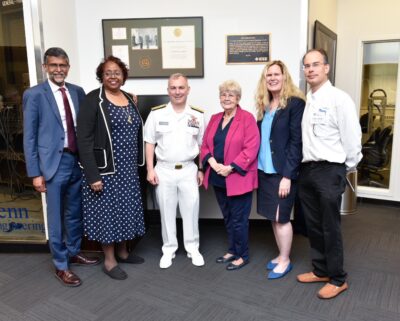
Philly daily roundup: City tech department layoffs; Is AI really new; Esports association comes to Philly
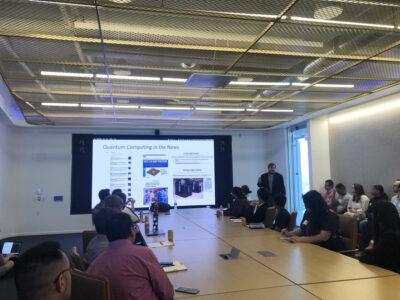
Philly daily roundup: Tech walks; Join us at Builders; Latus Bio raises $54M
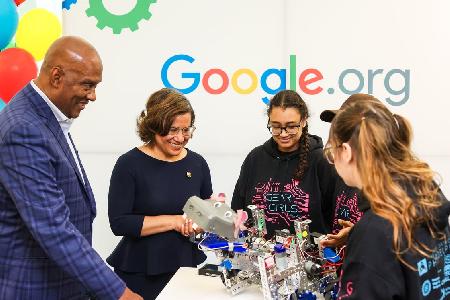
Philly daily roundup: What's next for ACP; Cheese dispensary tech; Philly Tech Week
